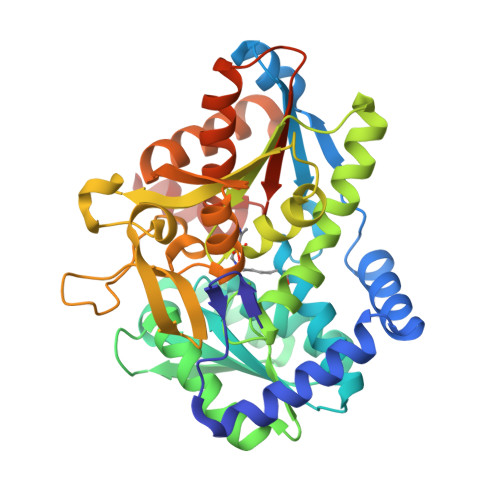Substrate multiplexed protein engineering facilitates promiscuous biocatalytic synthesis.
McDonald, A.D., Higgins, P.M., Buller, A.R.(2022) Nat Commun 13: 5242-5242
- PubMed: 36068220
- DOI: https://doi.org/10.1038/s41467-022-32789-w
- Primary Citation of Related Structures:
7RNP, 7RNQ, 7ROF - PubMed Abstract:
Enzymes with high activity are readily produced through protein engineering, but intentionally and efficiently engineering enzymes for an expanded substrate scope is a contemporary challenge. One approach to address this challenge is Substrate Multiplexed Screening (SUMS), where enzyme activity is measured on competing substrates. SUMS has long been used to rigorously quantitate native enzyme specificity, primarily for in vivo settings. SUMS has more recently found sporadic use as a protein engineering approach but has not been widely adopted by the field, despite its potential utility. Here, we develop principles of how to design and interpret SUMS assays to guide protein engineering. This rich information enables improving activity with multiple substrates simultaneously, identifies enzyme variants with altered scope, and indicates potential mutational hot-spots as sites for further engineering. These advances leverage common laboratory equipment and represent a highly accessible and customizable method for enzyme engineering.
- Department of Chemistry, University of Wisconsin-Madison, 1101 University Avenue, Madison, WI, 53706, USA.
Organizational Affiliation:



















